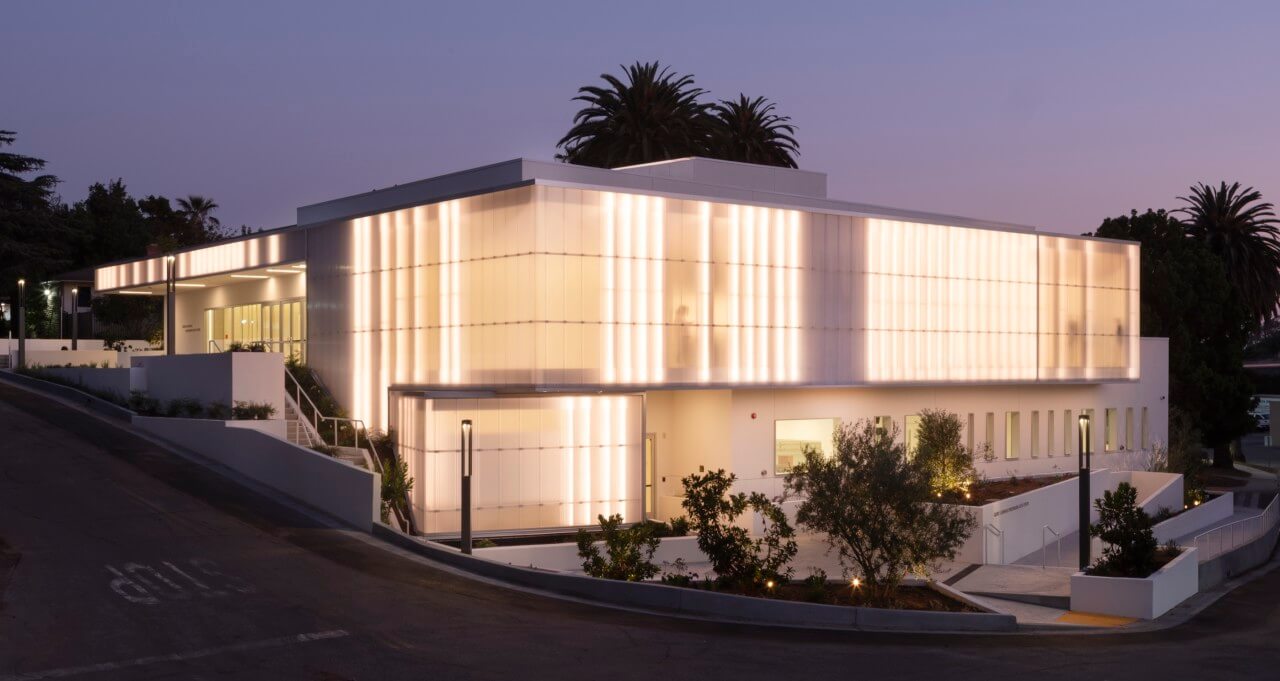
Also located on the Westside of L.A. on the Cheviot Hills campus of Vista Del Mar Child and Family Services, a nonprofit founded in 1908 as the Jewish Orphan’s Home of Southern California, is a newly opened building that also bears Kaufman’s name: the Glorya Kaufman Performing Arts Center (GKPAC).
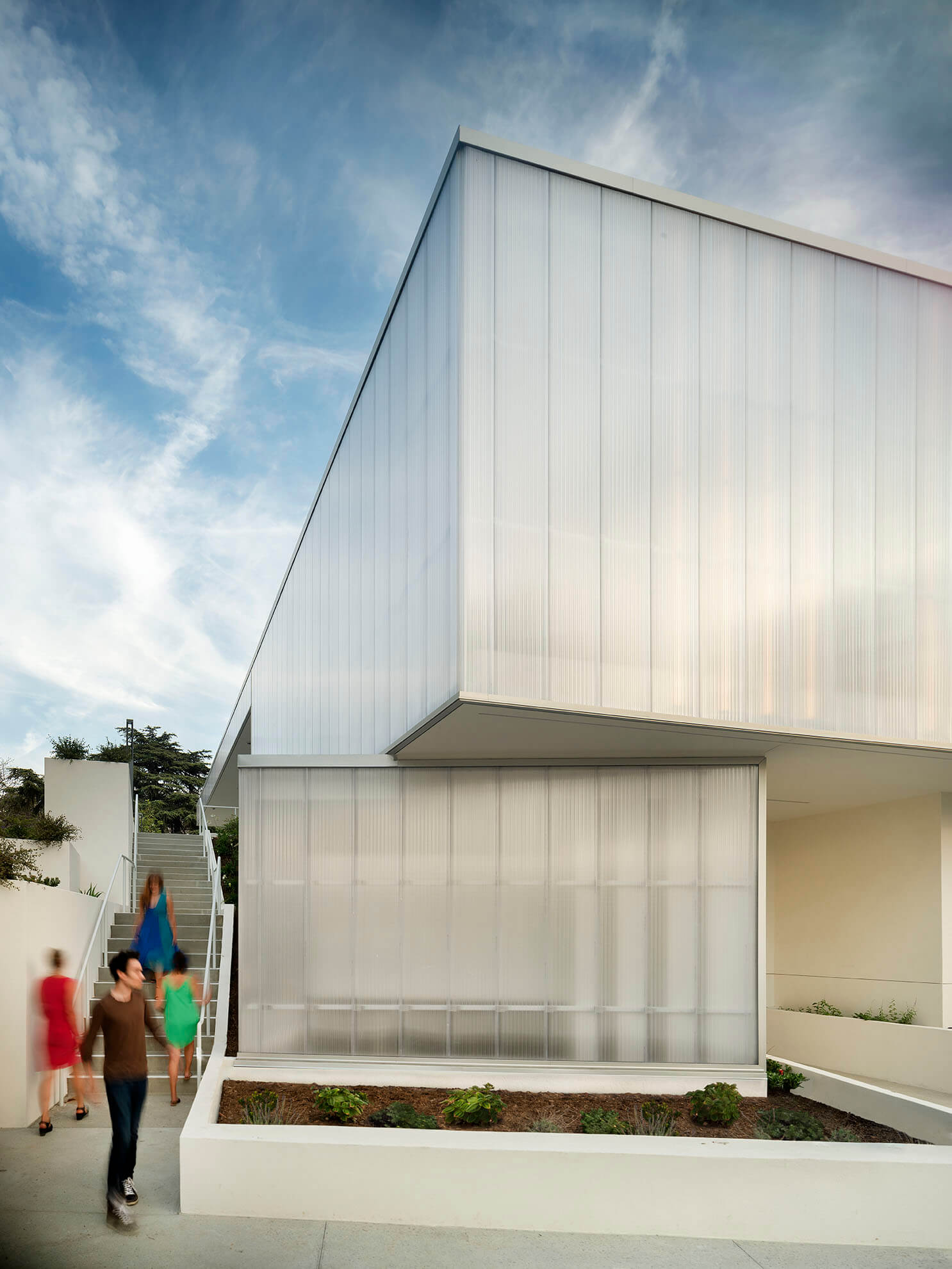
Located in a transformed synagogue on the Vista Del Mar campus, the GKPAC is a multifaceted performing arts hub complete with a 300-seat theater that establishes a permanent home for Vista Del Mar’s therapeutic arts program. Completed over the summer, the synagogue-turned-performing arts center was designed to host a range of programming including dance, music, theatrical productions, educational efforts, and community events geared to draw the wider neighborhood, and neighborhoods beyond, to the Vista Del Mar campus. In addition to the facility-anchoring 2,500-square-foot theater, the GKPAC includes a variety of production support areas and flexible spaces that can serve as classrooms, rehearsal spaces, and more depending on specific programming needs.
Relatively modest in size but expansive in its impact, the 10,550-square-foot adaptive reuse-slash-extension project (4,700 square feet of renovated existing space is joined by an L-shaped 5,850-square-foot new addition) was designed by L.A.-based AUX Architecture with Shawmut Design and Construction serving as general contractor.
Noting that the existing synagogue was primarily only utilized during high holidays, Brian Wickersham, principal of AUX, explained to AN that “the building was always intended to be a catalyst for change on the campus, but functionally it has been transformed into a building that could be used seven days a week both day and night.”
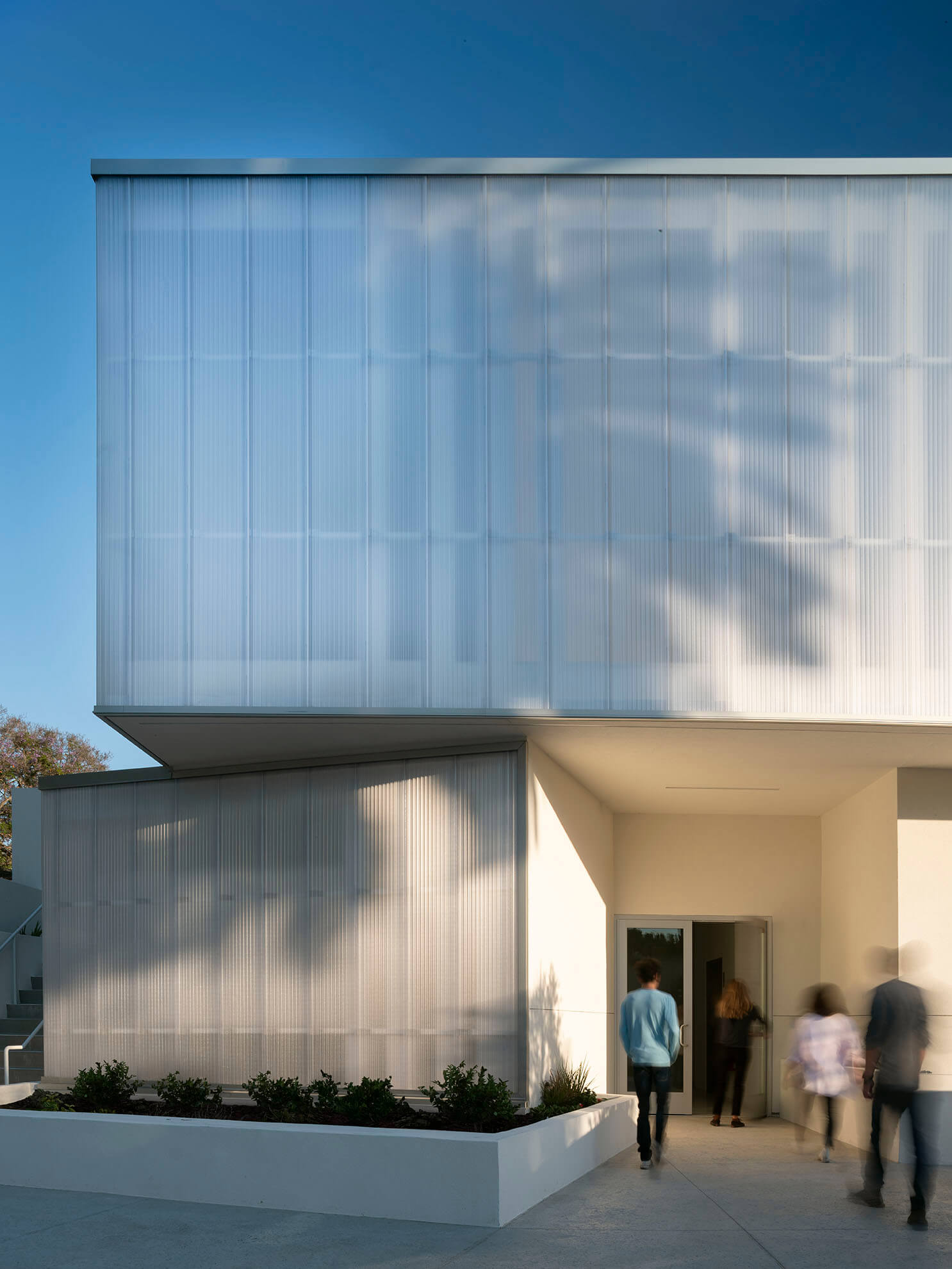
“By day, it is a classroom building, auditorium, the primary gathering space for the children, and the campus sanctuary,” he said. “By night, it is utilized for neighborhood events and for professional performances that will help generate needed funds for the nonprofit.”
Notably, the adaptive reuse of the building, which is estimated to have reduced the carbon footprint of the project by roughly 100 metric tons of embodied CO2, employs the extensive use of translucent polycarbonate panels—one of the largest architectural wall installations of its kind for a cultural building in Southern California. Both insulating the existing building and drawing in natural daylighting to the addition’s accessory spaces and classrooms, the GKPAC’s glowing polycarbonate skin preserves the campus’s temple while also “completely revitalizing it,” said Wickersham.
In total, the new facade used 160 20-inch-wide polycarbonate panels spanning a total area of 2,900 feet. Individually placed into the system’s recycled aluminum framing via boom lift by Shawmut, the panels, which, in addition to being fully recyclable are also made from 35 percent recycled plastic, were manufactured by the Pittsburgh-based EXTECH/Exterior Technologies, Inc.
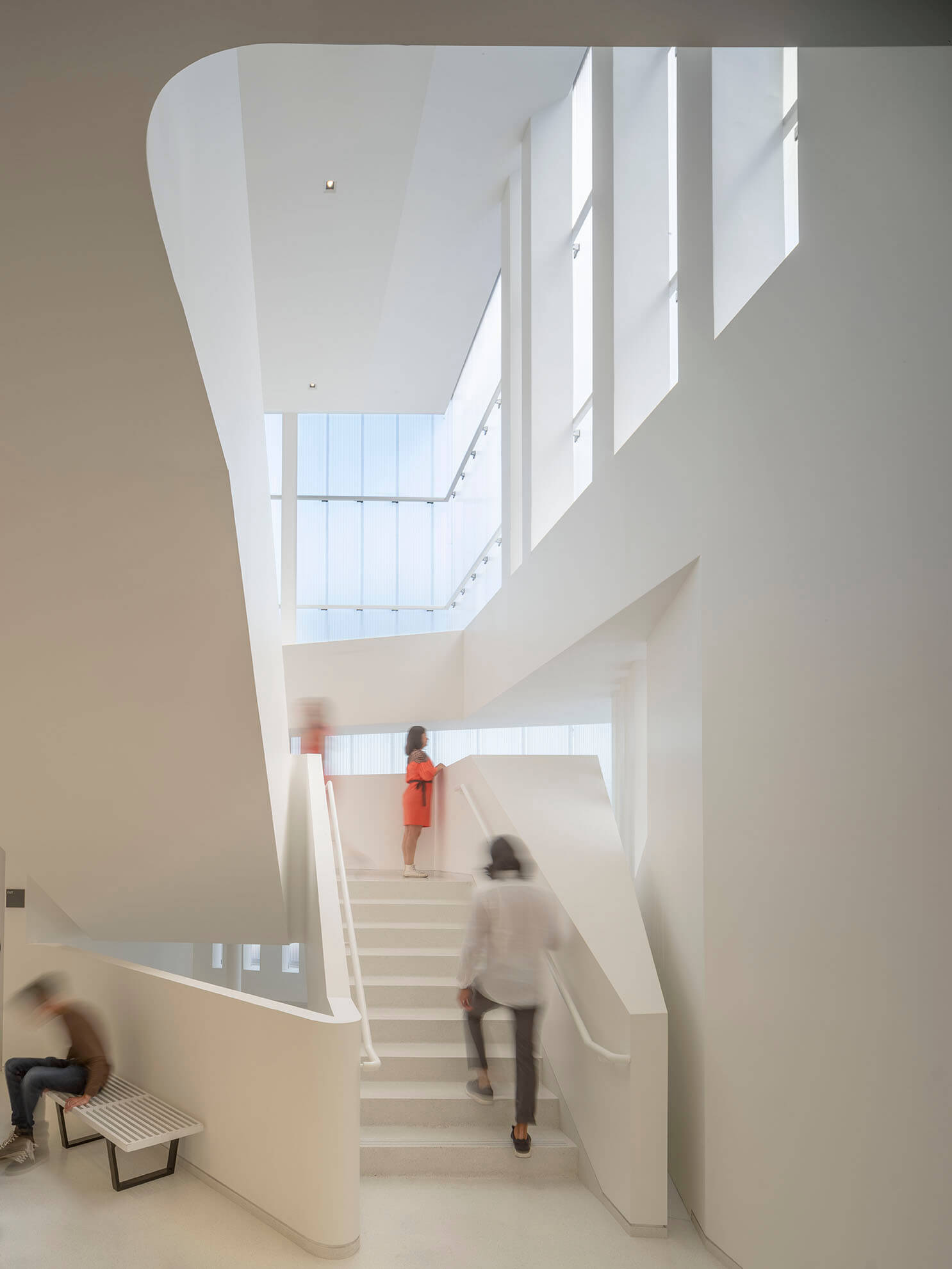
Directly behind the diaphanous modular facade, the design team created a series of “rhythmic columns” that create an interplay of light and shadow. As noted in a press release, an inspiration for the screens was Martha Graham’s modern dance solo Lamentation that “honors the sensations of compression and expansion that many kids with learning, autism, and behavioral challenges experience. The design conveys a supportive sensory environment for students who will now learn, meet, perform, be entertained, and worship in this newly transformed building.” (In addition to offering a range of child, youth, and family services in education, mental health, adoption, residential care, and more, Vista Del Mar is one of the most prominent resources for children on the autism spectrum in greater L.A.)
Additionally, a range of key design considerations including a subtle color palette, high acoustical performance, and the aforementioned multi-use spaces were implemented to “inspire new learning models.” Low-impact, high-efficiency building systems were also paramount: integrated LED lighting, low-flow water fixtures, and infrastructure for future solar photovoltaic panels are among the reborn building’s sustainable attributes. Outside the GKPAC, the design team, with SQLA leading the landscape design, executed a drought-tolerant landscaping scheme with other sustainable features including permeable hardscaping and biofiltration planters to aid in stormwater control.
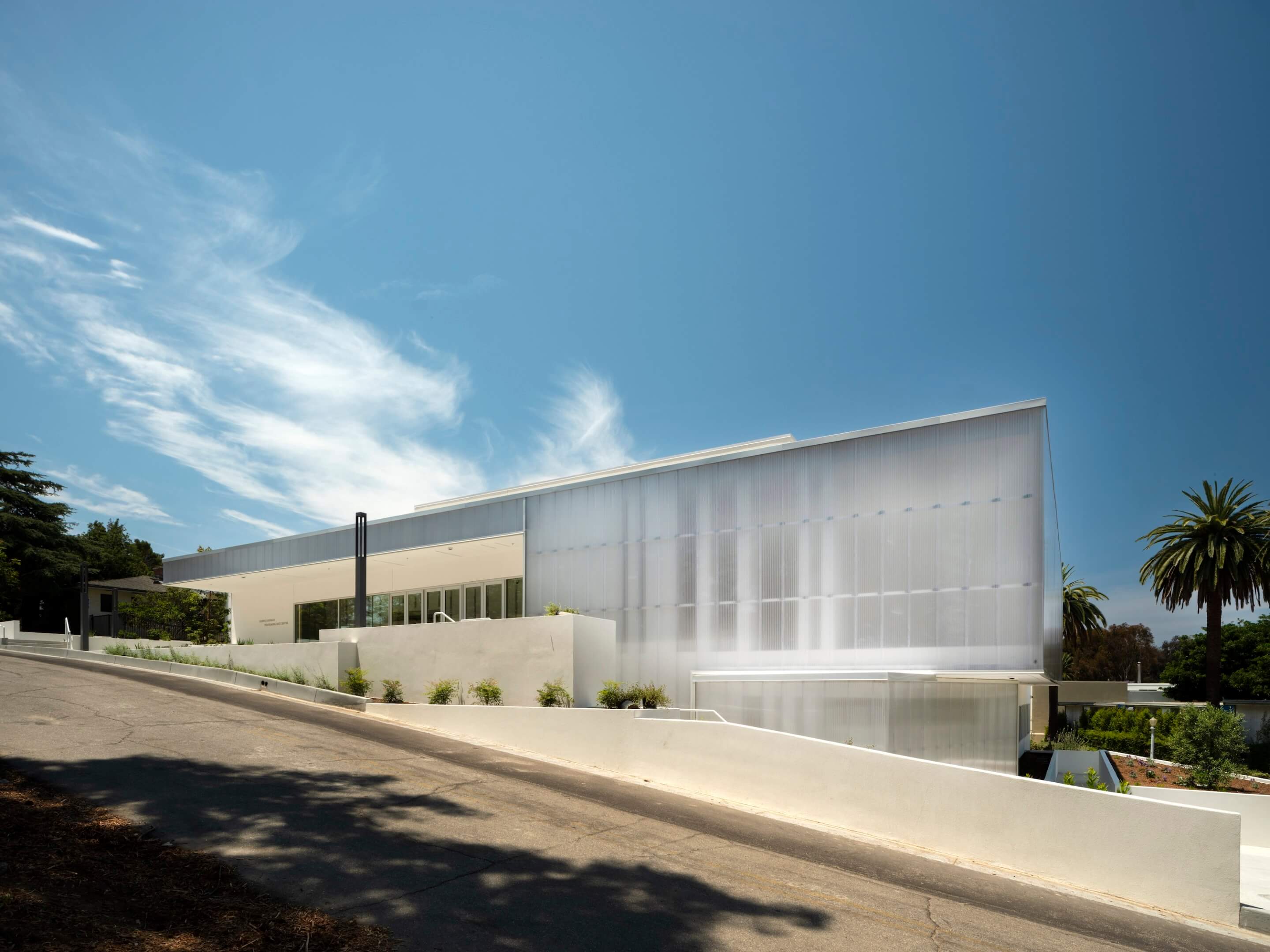
“As our community contends with the pandemic, we’re reminded of the enduring power of the arts to console, heal, create community and uplift lives,” said Craig Prizant, Vista Del Mar Chief Development and Marketing Officer, in a statement. “In our brand-new performing arts center, Vista children and families will have every opportunity to make the journey from surviving to thriving as they participate in our cutting-edge therapeutic dance, music, theater and other programs. We’re so grateful to visionary philanthropist Glorya Kaufman for investing in our children’s futures. AUX has innovated the perfect space in which Vista families and the greater community will find joy as they root and rise by opening their minds and hearts.”




